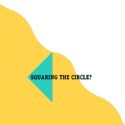

| page 5 of 14
|
 |
|
TEACHING
|
|
The painter Paul Klee said:
"No good artist should teach ..." Oh dear! But then said -
" ... and no-one should teach who is not a good artist!"
|
|
He then proceeded to defy his own advice by being a superb painter and a superb
teacher at the Bauhaus in the early 1920s ("The Thinking Eye: the notebooks of Paul Klee.", Spiller 1961). I too would argue that my continued
professional practice as an artist has been the bedrock for my teaching. It provides me
with a strong connection to students - we share similar aims, we engage in similar
processes. It provides me with a fundamental credibility, and is a basis on which to build
mutual respect between student and tutor. Why should any student take the least bit
notice of what I say if I don't practice what I preach? After all, you wouldn't expect to be
taught how to play the clarinet by someone who did not play themselves.
My intial inexperience in teaching in sculpture forced me to rely on the procedures of
practice with which to structure my teaching. It seemed to me that constructing a
teaching process had similarities to constructing a sculpture, starting with:
|
 | an exciting vision and idea (equivalent to educational aims and objectives) |
 | a response to, and dialogue with, materials and processes (equivalent to interaction with students through projects) |
 | a personal methodology (equivalent to a preferred but flexible teaching style) |
 | resultant artwork (equivalent to achieved learning outcomes) |
 | an evaluated direction for work, or a resolved piece, which can be peer reviewed (equivalent to the project 'crit' of student work).
|
| Paul Klee also used his experience as a painter to visualise the design process, using familiar objects in unfamiliar relationships. His explanations of, for example colour mixing, are gems of visual communication, collected in the book "The Thinking Eye". We were both attempting to connect two previously unconnected experiences - art and education - he brilliantly using the metaphor of the sketchbook to explain pedagogic structures. | |
| Despite having had a very good education I was highly critical of the 'teaching' I had experienced, mainly for its apparent lack of clarity and structure. I became more and more fascinated by the teaching process and how students learn, and was ultimately drawn to exploring and hopefully improving my understanding of and capability for teaching. My first encounter with Research with a big R was about to begin! | |
 previous page previous page |
 next page next page |